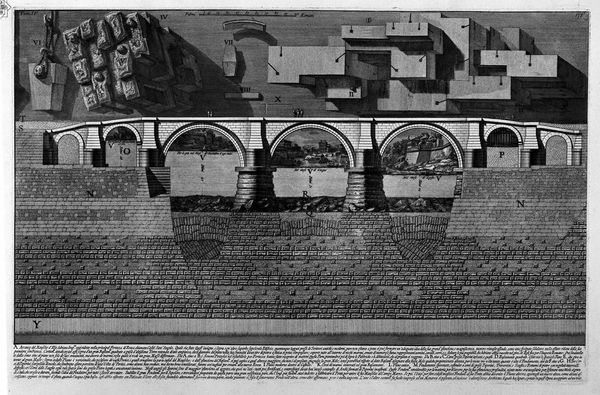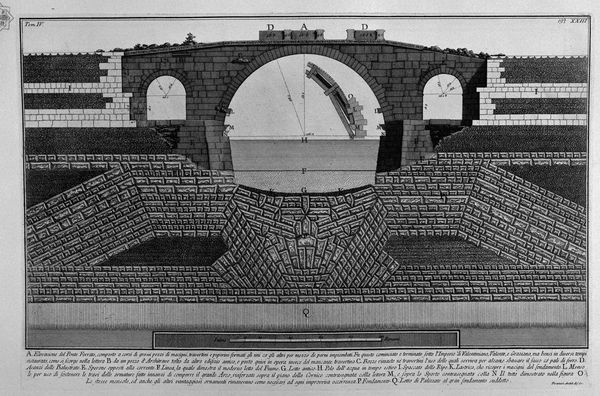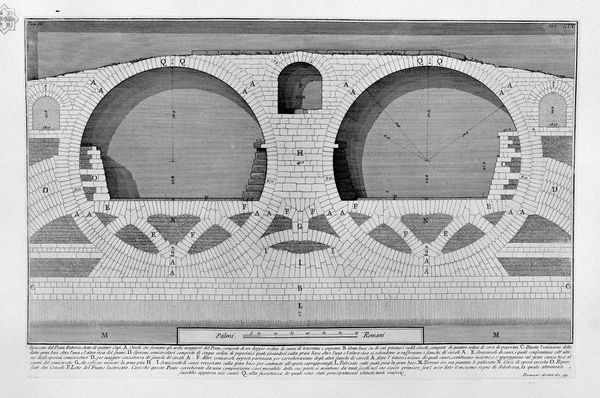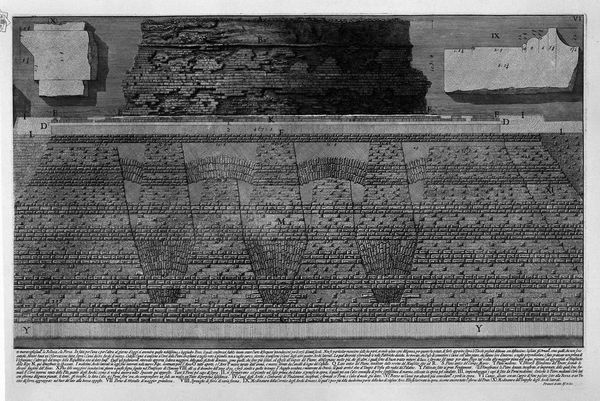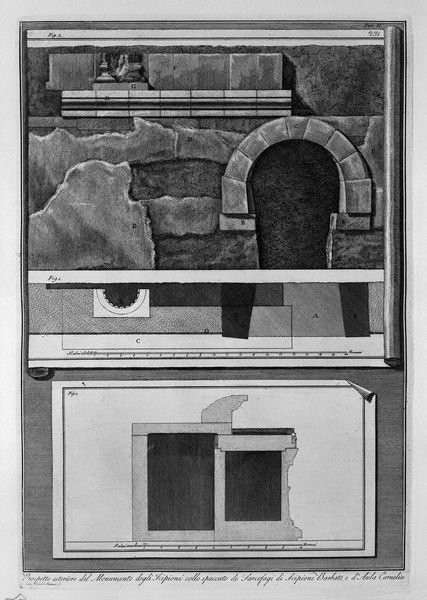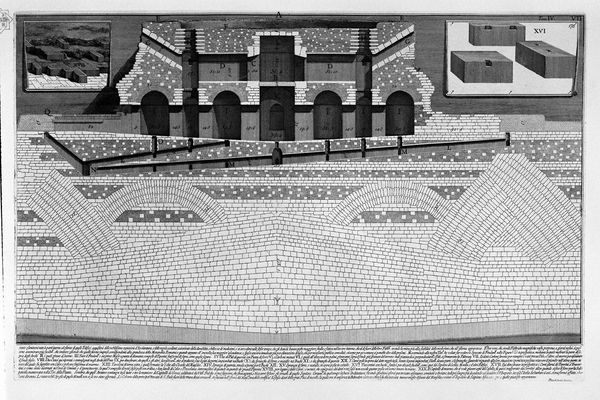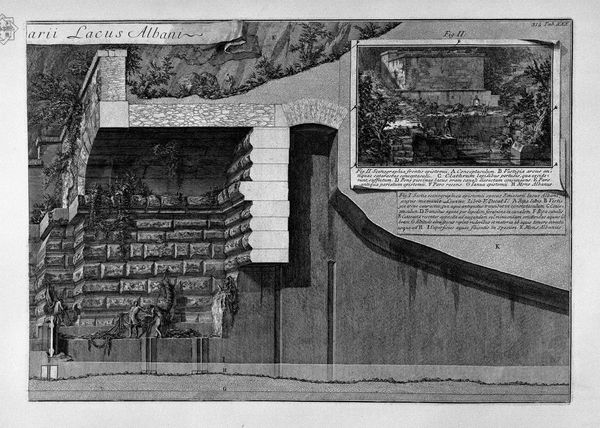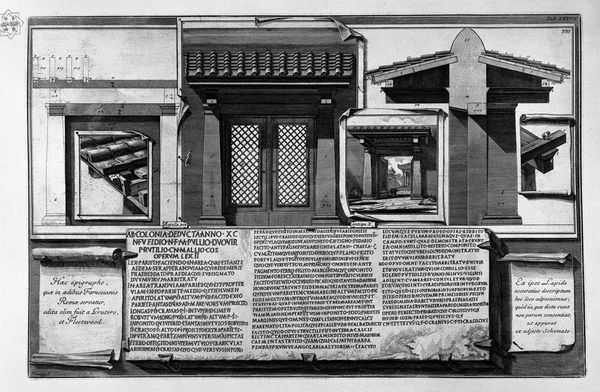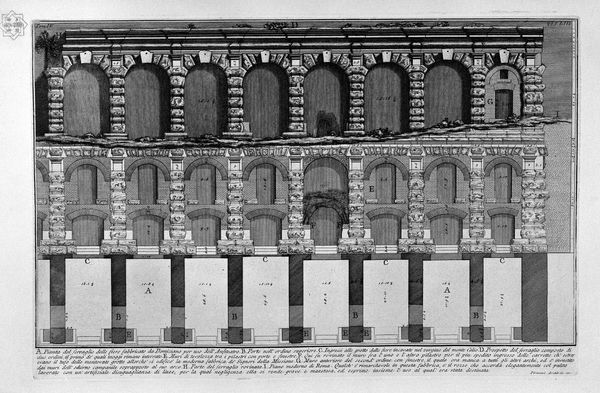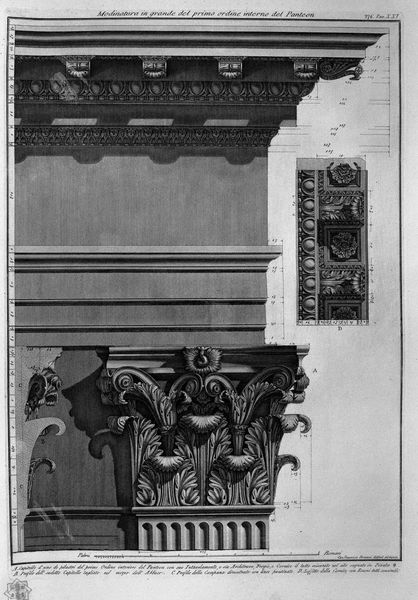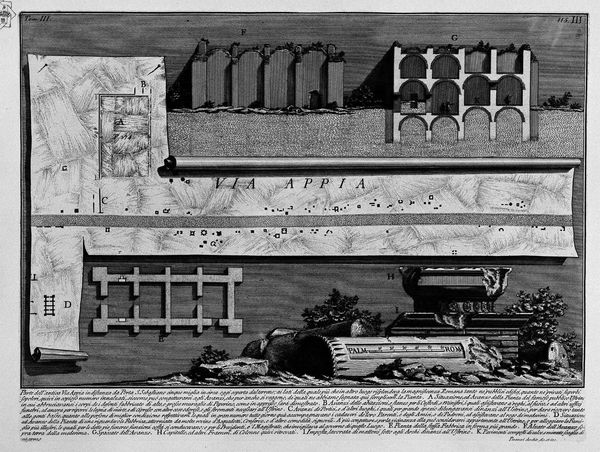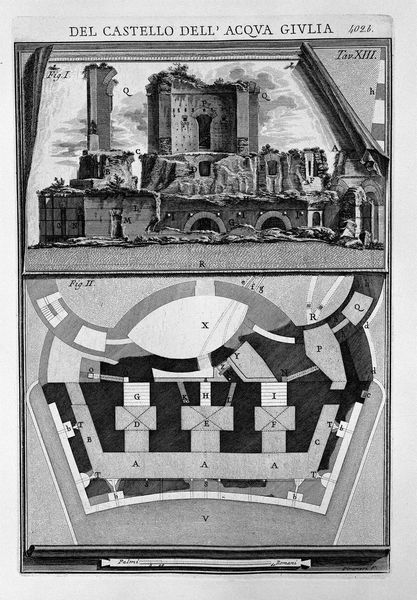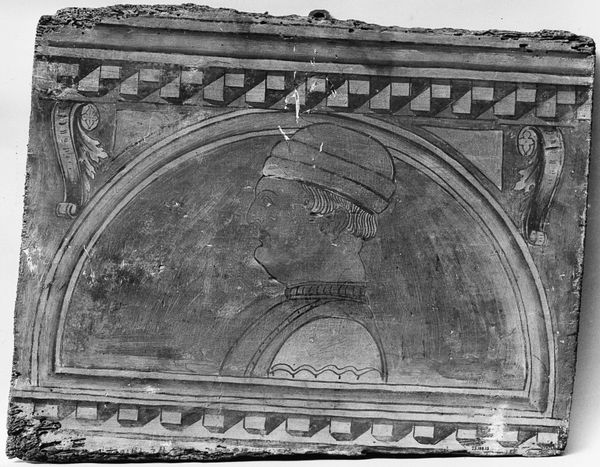
print, etching, engraving, architecture
# print
#
etching
#
sculpture
#
landscape
#
form
#
romanesque
#
geometric
#
black and white
#
arch
#
line
#
cityscape
#
engraving
#
architecture
Copyright: Public domain
Curator: Look at this print. It’s Plate VII from volume four of Giovanni Battista Piranesi’s "The Roman Antiquities," a vast survey of ancient Roman architecture. It's like an exploded diagram, all lines and meticulous detail. What's your take? Editor: It feels… intensely rational. Cold, even. Almost clinical in its dissection of these grand, crumbling structures. You lose the romance of the ruin in this level of precise articulation. Curator: Perhaps. But for me, the precision is its own form of romance! He’s revealing the secret life of these buildings. It's like Piranesi is x-raying the soul of Roman architecture, isn’t it? Laying bare the layers of history. All those careful etchings create such dramatic contrast between light and shadow... almost hyper-real. Editor: I appreciate the technical mastery. The way he meticulously maps out each stone, arch, and support. It speaks to an obsession with order and categorization, a very Enlightenment desire to tame the past through knowledge. But I wonder, does it actually bring us closer to understanding the actual lives and labor that went into creating these structures? Whose vision are we really seeing here? Curator: Ooh, good question! He's definitely interpreting, imposing his own artistic vision. But it's not purely cold and calculated, I think it's about passion as well. His architectural fantasies, even in these ostensibly documentary prints, betray such delight! Almost as if he were rebuilding Rome stone by stone on his copperplate. Editor: Maybe the tension between objective recording and subjective interpretation is the key. We are given these beautifully rendered structures but devoid of human presence beyond the inscription; it reflects how history is so often framed. Curator: Precisely. He is, in a sense, creating his own monument. One that speaks volumes about not only Roman Antiquity, but also his own artistry and ambition. It is the ambition of Rome reborn, in ink! Editor: Ultimately, viewing this work requires that we consider the gaze it embodies. By meticulously examining these remnants of antiquity, Piranesi implicitly prompts questions around how power and ideology are interwoven within architectural representations, a subject still critically relevant today. Curator: Well said. I feel enriched every time I engage with his work, because the closer you look the more questions arise. Editor: Yes, perhaps the purpose of documenting and preserving this image of the Roman ideal, ultimately serves the important function of helping future generations look critically at our place within such power dynamics, challenging those representations, so that new worlds may emerge.
Comments
No comments
Be the first to comment and join the conversation on the ultimate creative platform.
